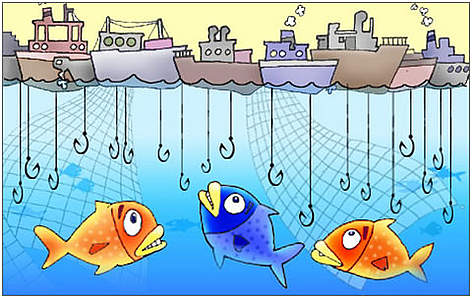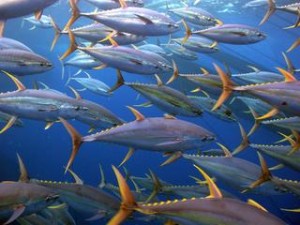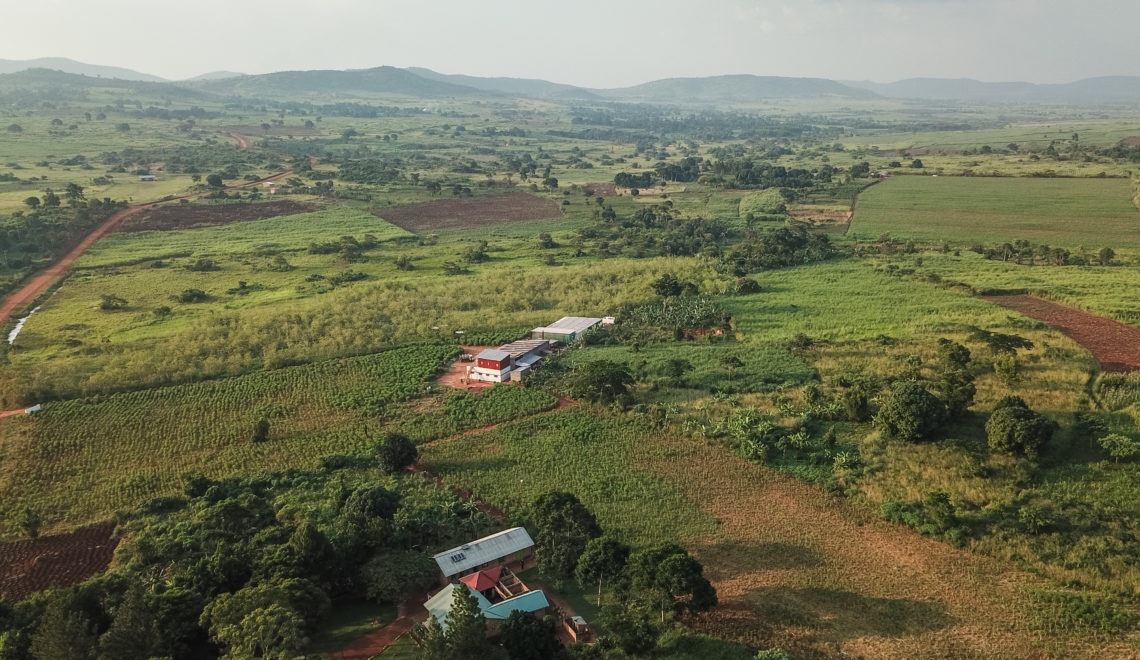
Coral reefs are among the most threatened ecosystems on earth. Functioning as a foundational support system for marine food chains, we depend on coral reefs to provide the nutrients and resources that allow bigger fish to survive. Throughout human history, these fish have been an important part of our diet. But somewhere along the line, our ways of catching fish became too much for fish populations to handle, and the system was knocked out of balance. Fisheries are collapsing all over the world, endangered fish are being covertly labeled with exotic names to trick consumers, and according to National Geographic, our world will run out of seafood by the year 2048. With all that in mind, here are 5 things you can do right now to tackle this issue in your daily life:
- Download the Seafood Watch App. The Monterey Bay Aquarium has a wonderful program called Seafood Watch that gives information to consumers about the relative sustainability of many different types of seafood that you would be able to order in a restaurant. If you have a smartphone, you can download the app to check the sustainability of the fish you are about to order in real time. Even if you don’t have a smartphone, you can find this information at http://www.seafoodwatch.org/.
- Include seafood in Meatless Mondays. Try going meatless, including avoiding seafood, once a week. Even decreasing your seafood consumption by one day a week can make a difference, and it’s pretty easy to do!
- Educate yourself about aquaculture. Aquaculture is a practice in which fish are raised in captivity and farmed for human consumption, instead of caught in the wild. There are some aquaculture outfits that farm their fish very sustainably and safely, but many outfits have problems such as the use of wild fish to feed the farmed fish, creation of effluent and pollution that damages nearby ecosystems, genetic disruption of local fish populations, and overuse of antibiotics. Knowing the facts about aquaculture can help you think more critically about the fish you order at restaurants and buy in the grocery store.
- Avoid fish that are falsely advertised. Many species in the fish market are sold under fake names to make them sound more exotic and appealing to consumers, while hiding the true identity of the fish. Two examples are the orange roughy and the Chilean sea bass. The orange roughy, whose true name is the slimehead, has a slow reproductive cycle, so overfishing is very harmful to its populations, and it is normally caught by bottom trawling, which is a very destructive fishing method. The Chilean sea bass, whose true name is the Antarctic toothfish, comes from the Ross Sea of Antarctica, which is considered to be one of the last remaining pristine marine ecosystems on Earth, and which is starting to be exploited by large seafood companies.
- Buy local. So much of the fish we consume is sourced from faraway locations and transported over long distances, which has a big impact on the planet and is a large contributor to overfishing. Whenever possible, try to buy fish from local vendors and markets.
 https://c402277.ssl.cf1.rackcdn.com/photos/4074/images/featured_story/yellowfin_tuna_ISSF_MUIR_IMG_1730.JPG?1367419542
https://c402277.ssl.cf1.rackcdn.com/photos/4074/images/featured_story/yellowfin_tuna_ISSF_MUIR_IMG_1730.JPG?1367419542
Featured Image: http://d2ouvy59p0dg6k.cloudfront.net/img/overfish_img1_col2b_350394.jpg










